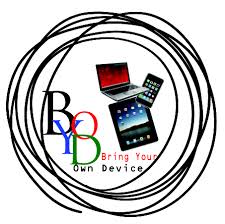Enterprise Mobility continued making headlines in 2014 with more innovative mobile devices and security vulnerabilities than ever before. The fallout from these events offer valuable lessons, not to mention insight into how BYOD organizations’ reactions will shape the industry going forward. Here are five major developments you can expect to see in 2015.
1. Rise of the Phablets
In 2015, expect that phablets wil become a disruptive technology and dominant force as BYOD devices of choice. The larger display size they offer will make these devices an attractive all-in-one solution for many smartphone and tablet users. The expected surge of the iPhone 6 Plus will launch them into the spotlight. Their influence may trigger a decline in BYOD usage of tablets, especially in 2015. App developers will undoubtedly need to modify their apps for this new form factor.
2. Is the honeymoon over for MDM?
Many security vendors have added MAM (Mobile Application Management) and MIM (Mobile Information Management) tools to Mobile Device Management (MDM). Packaged as EMM (Enterprise Mobility Management), they still do not add up to the comprehensive enterprise mobility solution that enterprises require. EMM implementation is still very much in the “honeymoon stage” of implementation. Like a young and developing romance, security flaws will eventually be uncovered as it matures. Since MDM is still anchoring this approach, the limits of EMM will surface as employee feedback starts cycling back to organizations. IT costs for managing on-device security requirements will also become an issue.
Featured Download: Social media access at work. Do your employees know the rules?
3. Mobile Apps – Security will Take Center Stage
In 2014, I said that more organizations would invest in robust and data-rich enterprise apps like CRMs and ERPs. With more complex apps being adopted into BYOD, securing these apps will be paramount. MDM and MAM will be trialed but will also require IT customization such as App Wrapping and Containerization. It will be interesting to see how successful they’ll be over time.
4. Vertical BYOD Solutions will become Bigger
More vendors will target specific industries facing difficult challenges implementing BYOD. In healthcare, doctors often work outside of the hospital but need mobile app access. Ensuring Protected Health Information (PHI) on these apps is a must with the liability issues required under HIPAA (Health Insurance Portability and Accountability Act). Meanwhile, banks and financial institutions must secure extremely sensitive customer and corporate data, and public and private defense agencies encounter unique cybersecurity threats. Those stakes have never been higher. Their security specifications require customized devices and adopting a COPE (Corporate Owned Personally Enabled) policy. This opens up niche opportunities for vendors who can roll out mobile offerings in increasing numbers.
5. Virtualization Technology will Make a Splash
As organizations gather analytics and weigh the approaches to managing BYOD, the big picture will come into focus. Mobile-first security solutions will take precedence. More organizations will shift philosophies on the best way to “follow the data,” and more CIOs will opt to manage data security away from personal devices. Both on-device (Multi-Persona) and off-device virtualization such as VMI (Virtual Mobile Infrastructure) will become a larger part of the BYOD landscape.
By Israel Lifshitz, CEO, Nubo
About Nubo
 Nubo Software was founded in 2011 by Israel Lifshitz, founder and CEO of SysAid, an ITSM solution used by over 100,000 companies worldwide. Nubo Software’s leadership is rounded out by VP R&D Hanan Baranes and VP Products & User Experience Anat Litan Sever. Nubo is located in Airport City, Israel.
Nubo Software was founded in 2011 by Israel Lifshitz, founder and CEO of SysAid, an ITSM solution used by over 100,000 companies worldwide. Nubo Software’s leadership is rounded out by VP R&D Hanan Baranes and VP Products & User Experience Anat Litan Sever. Nubo is located in Airport City, Israel.
The opinions expressed in this post belongs to the individual contributors and do not necessarily reflect the views of Information Security Buzz.



